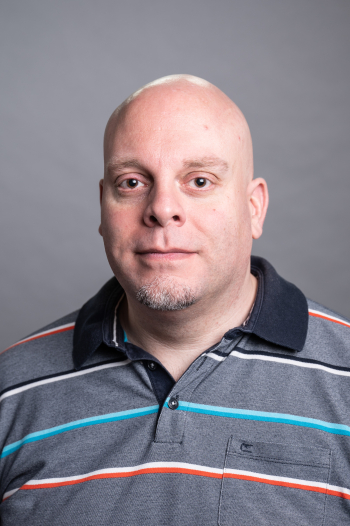Medailonky lektorů
Seznamte se s některými z našich lektorů a lektorek stáží Otevřené vědy.
Wolfgang Hornfeck

What specific research are you currently working on?
I am working on the mathematical analysis of crystal structures. Crystal structures describe the spatial arrangement of atoms in the solid state of matter. My goal is to find novel quantitative crystal structure descriptors, mathematical formulas or algorithms, that capture some essential feature of a given crystal structure, and might allow to establish structure-property relationships, for larger classes of crystal structures, and with respect to certain physical properties. This is motivated by the existence of numerous similar tools existing for molecules. Currently my focus is on measures of structural complexity and spatial distribution, including work on the combinatorics of Wyckoff sequences, and the algorithmic generation of special classes of artificial crystal structures. Results include an extension of Krivovichev's complexity measures, the first applications of the star discrepancy and the diaphony uniform distribution measures in crystallography, and the investigation of chiral spiral cyclic twins and their geometric construction from integer sequences. In addition, I am working on a dedicated software - MIDAS - for the Mapping of the Irregularity of Distribution of Atoms in Space.
Why do you lead internships for high school students?
I enjoy teaching. I enjoy talking about science in general, but teaching offers some unique advantages. One of these is that it makes me think about fundamental topics myself again. Quite often I realize that I haven't understood some basic facts as good for myself as I thought before. As part of the preparation for teaching, I have to select and structure the topic under consideration, trying to get to its essence, and continuously working on the best possible presentation. This is especially true for the teaching of high school students, since the concepts, on which my research is based on, are rather abstract and make use of advanced levels of mathematics, which cannot be assumed to be existing knowledge of the students. Since my goal is to show how authentic science is done at the frontier of knowledge, this makes the open science project in fact very challenging, but also very interesting, and eventually very rewarding, too. From my experience so far, all my students have been very motivated and interested in science, and the interaction with them, exchanging ideas and sharing the fascination about science, has been an inspiring intellectual pleasure for me, as much as I hope for them.
How did you get involved in science and work at the Czech Academy of Sciences?
I always have been a curious kid, but I did not consider doing science as a profession until the last two years in school. I had very good teachers in biology and chemistry which made me interested in studying chemistry (at the Philipps university in Marburg, Germany), first with the idea to later specialize in biochemistry, molecular biology, or microbiology. After I took a term in biochemistry, and in the process of the preparation for my final exams, I had to think about, and later choose, the topic of my diploma thesis. Yet, after a few personal meetings with professors, and by some weird coincidences, I got fascinated by the topic of quasicrystals and the method of X-ray diffraction, instead. This brought me into solid state chemistry, a topic denounced by some molecular chemists as 'baking stones'. After my diploma, I stayed with my professor (Bernd Harbrecht) to study intermetallic compounds. During this time I got very much exposed to all kinds of crystallographic knowledge, concepts, and ideas. Following my PhD and a postdoc focused on studying crystal growth of colloids (at the German Aerospace Center in Cologne, Germany), during which time my research continuously turned from more experimental to more theoretical, as well as from chemistry to physics, I still wanted to pursue science, but experienced some troubles to find a position in academia in Germany. This was the moment, where the Czech Academy of Sciences entered the stage, since its Institute of Physics harbours a world-famous Department of Structure Analysis, focusing very much on all the topics of my previous scientific life, and furthermore encouraging and endorsing doing independent, creative, and sometimes non-conformist science, in a friendly and nice working atmosphere. A perfect match. Besides, Prague is a beautiful place to live.
NEZ kreslená věda
je ojedinělý popularizačně-vzdělávací cyklus Akademie věd České republiky. Krátká animovaná videa tematicky zaměřená na vědu a poznání edukační a zábavnou formou přibližují zajímavé jevy z vědní oblasti (nejen) studentům a pedagogům středních škol.


